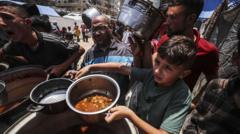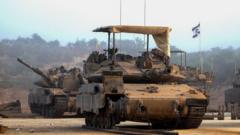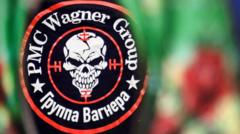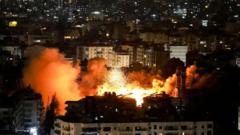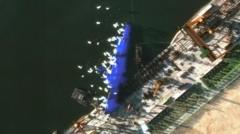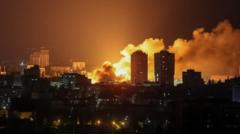As Myanmar grapples with the aftermath of a devastating 7.7 magnitude earthquake that has claimed nearly 3,000 lives, the response from the military junta has been anything but straightforward. In a situation where rescue operations must occur swiftly—within a critical 72-hour "golden window" for saving lives—aid and relief efforts face severe blockages. Reports indicate that military authorities have obstructed access for rescue workers in the most affected areas, with checkpoints and curfews complicating efforts amidst dire needs.
### Aid or Weapon? The Delicate Balance of Humanitarian Efforts in Myanmar's Earthquake Response
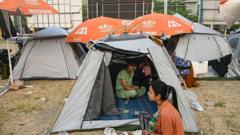
### Aid or Weapon? The Delicate Balance of Humanitarian Efforts in Myanmar's Earthquake Response
In the wake of Myanmar's recent earthquake, a series of obstacles prevent effective humanitarian assistance, raising deep concerns about the junta's intentions.
Despite a rare appeal for assistance from junta leader Min Aung Hlaing, claiming to have “opened all ways for foreign aid,” ground realities tell a different story. Aid groups, such as Fortify Rights, have described extensive delays and restrictions imposed by the junta, raising questions about the true motives behind their calls for international help. Historical patterns indicate that the military often uses humanitarian relief as a political tool, directing supplies solely toward areas under its control, while depriving resistance-held zones of vital assistance.
Adding to the turbulent situation, an aid convoy was recently fired upon by military forces, reflecting a worrying trend of targeting humanitarian workers. This has stirred up fears among civil society organizations that the junta may continue to weaponize aid by blocking it from certain communities, punishing them for their resistance to military rule.
Current conditions in the disaster-stricken regions are dire, with reports of food and essential supply shortages as roads remain under military control. Many volunteers risk severe repercussions in their attempts to navigate bureaucratic obstacles and deliver necessary aid. While some human rights advocates express cautious optimism that the international community may pressure the junta for better aid access, the military's mix of aggressive tactics and deceptive strategies remains a significant barrier to ensuring that help reaches those who need it most.
The situation continues to develop, with renewed hopes for increased humanitarian access tied to the junta's recent temporary ceasefire agreement. However, skepticism persists regarding its implementation and the junta’s broader agenda in utilizing foreign aid while repressing opposition. For those monitoring the situation, the need for transparency and accountability in aid distribution has never been more crucial to prevent the further exploitation of humanitarian assistance as a weapon of war.
Adding to the turbulent situation, an aid convoy was recently fired upon by military forces, reflecting a worrying trend of targeting humanitarian workers. This has stirred up fears among civil society organizations that the junta may continue to weaponize aid by blocking it from certain communities, punishing them for their resistance to military rule.
Current conditions in the disaster-stricken regions are dire, with reports of food and essential supply shortages as roads remain under military control. Many volunteers risk severe repercussions in their attempts to navigate bureaucratic obstacles and deliver necessary aid. While some human rights advocates express cautious optimism that the international community may pressure the junta for better aid access, the military's mix of aggressive tactics and deceptive strategies remains a significant barrier to ensuring that help reaches those who need it most.
The situation continues to develop, with renewed hopes for increased humanitarian access tied to the junta's recent temporary ceasefire agreement. However, skepticism persists regarding its implementation and the junta’s broader agenda in utilizing foreign aid while repressing opposition. For those monitoring the situation, the need for transparency and accountability in aid distribution has never been more crucial to prevent the further exploitation of humanitarian assistance as a weapon of war.

